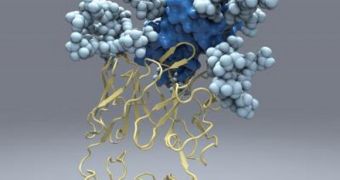A team of Scripps Research Institute (SRI) researchers were recently able to obtain the most detailed image ever created of a critically-important section of the resilient hepatitis C virus. This result will come in handy for efforts to develop a vaccine against this agent, which is currently extremely difficult, if not impossible, to treat successfully.
The image is focused on the E2 protein, which comes into play when hepatitis C infects the human liver. Without it, the virus would have a really hard time affecting this organ, which is why researchers plan to target E2 with new vaccines and therapies.
Three separate SRI laboratory groups were involved in the new study, details of which appear in a paper published in the November 29 issue of the top journal Science. The full name of the protein the team analyzed is the E2 envelope glycoprotein, e! Science News reports.
Previous studies have already concluded that some patients with immunity to the virus have antibodies in their blood stream that can bind to the E2 protein in a way that renders it useless for the virus. As such, it is highly likely that any successful hepatitis C virus will target E2, at least in part.
“We're excited by this development. It has been very hard to get a high resolution structure of E2 and it took years of painstaking work to finally accomplish that,” says the Hansen Professor of Structural Biology at SRI, Ian A. Wilson, who is also a senior author of the paper.
SRI assistant professors Mansun Law and Andrew B. Ward are the other senior authors. They say that the entire research effort took 6 years to complete. Now that all the structural details of E2's binding sites are well known, microbiologists can start developing a vaccine that mimics their actions.
Hepatitis C, which triggers incurable infections in humans, can be acquired through a variety of means, including improper blood transfusions, unsterilized medical instruments, and via hypodermic needle exchanges among drug addicts.
Ward says that any newly-developed vaccine “could be given to people when they're young and healthy, and they'd never have to worry about developing HCV-related liver diseases.” At-risk populations could also receive the vaccine preemptively, thus helping to lower HPC's incidence in the general population.

 14 DAY TRIAL //
14 DAY TRIAL //